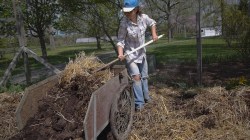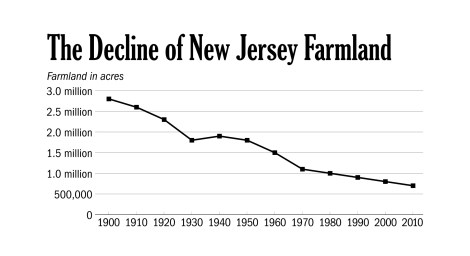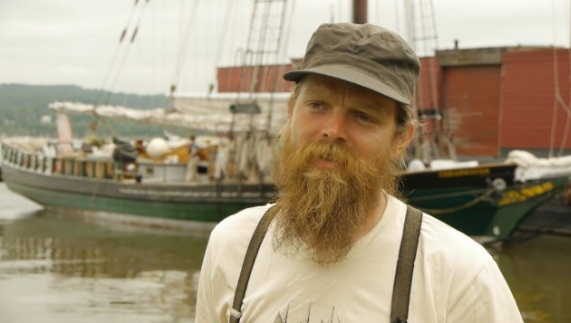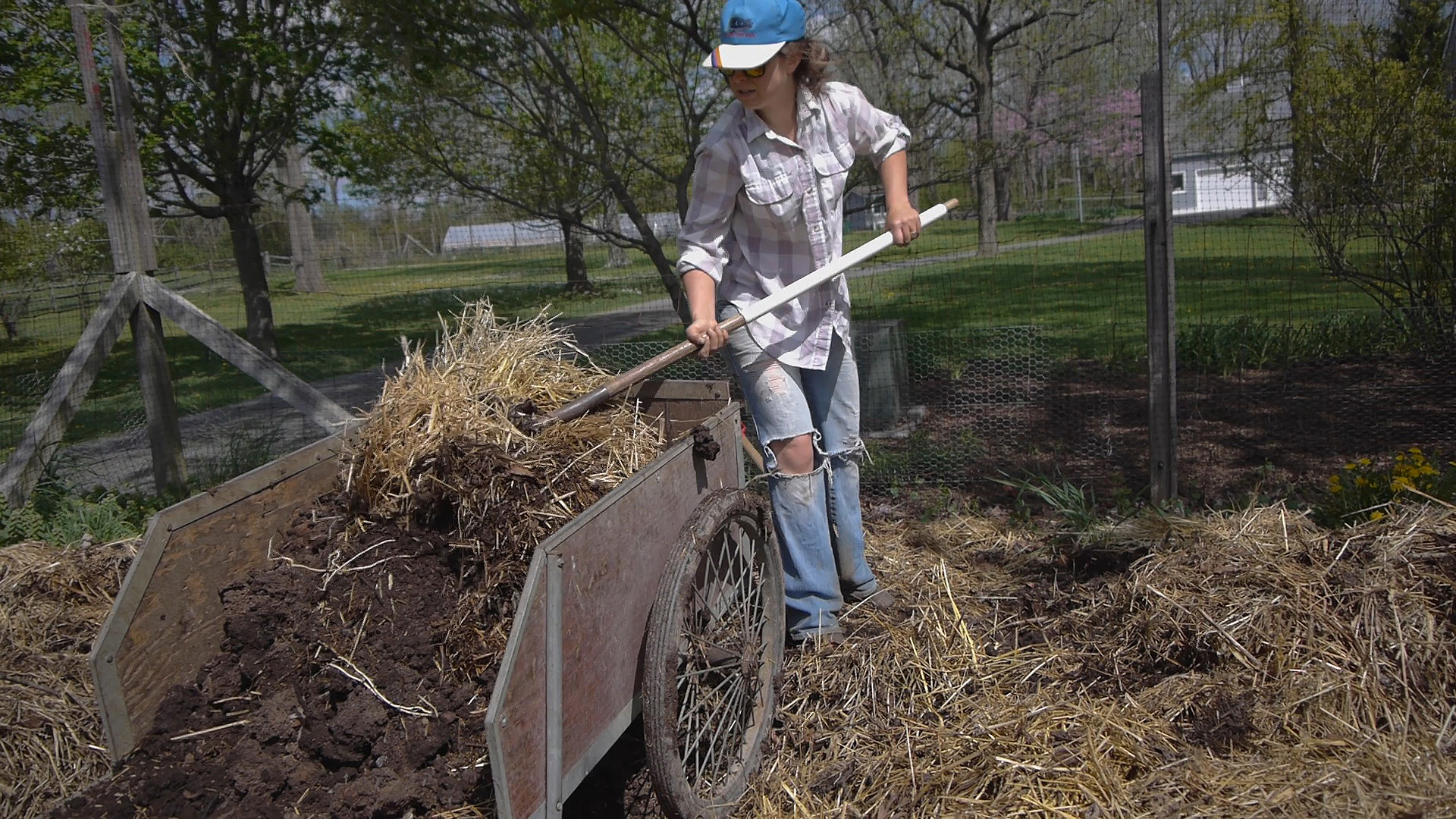 We desperately need more young farmers in this country.
We desperately need more young farmers in this country.
“If we do not repopulate our working lands, I don’t know where to begin to talk about the woes,” U.S. Deputy Secretary of Agriculture Kathleen Merrigan told The Washington Post this April.
The average age of the American farmer is 57 years old and rising. There are but 120,000 American farm operators age 34 and under. There are 1.3 million American farm operators age 55 and older.
In 2009, I picked up a video camera in order to start documenting something that looked hopeful. As if they had seen a poster with Uncle Sam’s pointing finger, young people with college educations — but absolutely no background in agriculture — were showing up on small organic farms in my home state of New Jersey, seeking training. In many cases, the self-appointed mission of these young people wasn’t just to farm, but to farm as sustainably as possible. I made a film about it, titled The Farmer and the Horse.
The problem is, at least in Jersey, there’s no straight path for young farmers to follow if their goal is to make enough money farming to actually own the farm. (Farmland prices here are the second highest in the nation.) Land tenure, many of these farmers tell me, is what they want: Not to be rich, not even necessarily to be financially secure, but at least to control their own destiny on a piece of land where the blood, sweat, and tears they shed during the 80-hour work weeks will fall on soil they can call their own.
 Tom Paduano, one of the stars of The Farmer and the Horse, examined his prospects at the end of the documentary and — spoiler alert — decided his best option was to leave the Garden State and try to farm elsewhere. Tom and his wife are now growing certified organic vegetables on leased land in Maryland.
Tom Paduano, one of the stars of The Farmer and the Horse, examined his prospects at the end of the documentary and — spoiler alert — decided his best option was to leave the Garden State and try to farm elsewhere. Tom and his wife are now growing certified organic vegetables on leased land in Maryland.
Tom recently explained the decision to a Baltimore magazine:
We cast a wide net — Jersey, eastern Pennsylvania, and northern Maryland. There were many opportunities managing farms for wealthy people. We weighed that. You get the stability of a salary and health insurance. But it’s not your vision, and the money that’s backing you often comes from Wall Street, which was a consideration for us. It’s harder to be a startup, but we ultimately decided we didn’t want to work for anybody but ourselves.
Turning the camera upward
In 2011, I began work on my second film, Sourlands. My idea was to tell three different stories all at once, all related to sustainability in New Jersey. One storyline delves deeper into the challenges young farmers face; another explores the ecology of Central Jersey’s last big forest; and a third looks into energy and what New Jerseyans are doing to reduce their carbon footprints. I suspected the threads might prove to be connected.
For the section of Sourlands devoted to farmers, I followed 29-year-old Aubrey Yarbrough to Stonehedge Farm in Hopewell, N.J. I first tracked Aubrey’s story in The Farmer and the Horse, when she made the leap from a comfortable office job into her first low-paid farming internship. Now, two years later, she was trying something unique: She was taking over the operation of a small farm for just one summer, as the owners would be spending the season elsewhere. The idea was that she could gain the valuable experience of what it takes to be the decision maker on a farm (in addition to being the bean picker, tractor driver, lettuce washer, bookkeeper, and saleswoman), without a huge financial risk.
At the outset, I thought the farming story in Sourlands would focus on the complicated economics that dictate the farming scene in Central Jersey. The valley between Princeton and what locals call “the Sourland Mountain” is home to the largest cluster of organic farms in the state. The farmers markets here are populated by hungry, affluent, educated customers. Fresh arugula fetches top dollar.
 It is at these markets that young farmers, some up to their eyeballs in debt, compete with well-established farms, as well as a throng of other new farms financed by outside wealth. Aubrey and her few acres of vegetables were entering the fray, and I thought it would be fascinating to tag along.
It is at these markets that young farmers, some up to their eyeballs in debt, compete with well-established farms, as well as a throng of other new farms financed by outside wealth. Aubrey and her few acres of vegetables were entering the fray, and I thought it would be fascinating to tag along.
But then something happened that made me turn my camera skyward.
The farming season of 2011 was defined by extreme weather, so much so that it shouldered into my story to become the star of the show. July ranked as the second-hottest month ever recorded in the state, and included one of the hottest days modern New Jerseyans have ever seen. August was, by a huge margin, the wettest month ever recorded, and it included Hurricane Irene, the costliest storm in New Jersey history. Then October brought a huge freak snowstorm. Overall, 2011 ranked as the wettest year in New Jersey history and the third-hottest.
At Stonehedge Farm, Aubrey was especially vulnerable to the record-setting deluge. Stonehedge is located on the edge of the Sourland Mountain, which is a raised wetland littered with 200-million-year-old boulders. It was so wet that Aubrey couldn’t get her tomatoes planted until June. Not coincidently, many other cash-strapped farmers have also tried their luck on the less-than-desirable soils of the Sourland Mountain over the past two centuries. If you’re a farmer and you don’t have access to good land, you take what you can get.
The weather last summer would have been simply unfortunate if it were merely bad luck. Instead it’s part of a tragic trend. Climate scientists say extremes of heat and precipitation are symptoms of global warming, and we should expect these extremes to get worse. Scientists are virtually certain that the main cause of global warming over the past century is the burning of fossil fuels by humans.
And so, the thread I was searching for between my farming story and my energy story was no longer hard to see. It buzzed and jumped like a live wire.
Strength in the movement
There’s a reason I’ve been following the sustainable agriculture movement so closely over the past few years. I’m an optimist at heart, but the data shows that in two of the biggest environmental fights of our time — the fight to stop global climate change and the fight to preserve the world’s biodiversity — the home team is on a losing streak.

But I see strength in the food movement. And hope. A brigade of young people are suddenly interested in learning how to grow food in ways that are healthier for the soil, the water, the atmosphere, native wildlife, and human health. Established farmers are stepping up to teach and support these young farmers, regardless of the fact that they represent the future competition. Consumers in New Jersey have responded by gathering en masse at farmers markets to buy produce directly from local farms. And good food just seems to have a way of bringing people and causes together.
At a gathering of Central Jersey organic farmers recently — it was a potluck — I listened in on a conversation between two of the veteran farmers in the room. They weren’t exactly elderly; they just weren’t in their 20s like almost everyone else in attendance. The two farmers discussed how a decade ago, the same potluck would have been a quiet, sparsely populated affair. Tonight the room was alive.
It won’t stay that way unless we find those youngsters some well-drained Garden State farmland to call their own. I suspect it’s the same story all across this nation.
Sourlands official trailer:



